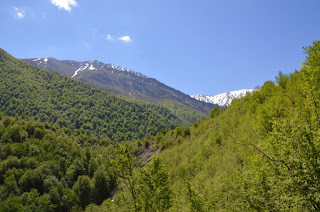Hyrcanian Forests
The Hyrcanian forests cover the northern slopes of the
Alborz and Talesh mountains from the Caspian Sea up to 2800m and belong to the temperate
deciduous forests. The climate is humid subtropical. The rate of humidity and
precipitation is high. (600-2000mm per year and decreases from west to east). These
forests belong to the Euro-Siberian bio geographical region. The most important
and domainant trees of these forests are Quercus castaneifolia, Quercus
macranthera, Alnus glutinosa, Fagus orientalis, Carpinus
betulus, Fraxinus excelsior and Parrotia persica. This region
was not as badly affected as other forests and hence a number of relict species
belonging to the Arcto-Tertiary flora still remain in these forests, such as Acer
velutinum, Gleditsia caspica, Parrotia persica, Quercus
castaneifolia, Pterocarya fraxinifolia, and Zelkova carpinifolia. Of
conifers only 2 varieties exist: Juniperus communis and Taxus
baccata.
These forests are divided into 3 vegetation types; lowland,
montane and subalpine forests. Over 50% of the original Hyrcanian forest has
been lost because of mankind. We are privileged to trek these forests and hope
that the remaining half will remain intact for future generations to enjoy.
Further reading;
https://en.wikipedia.org/wiki/Alborz



